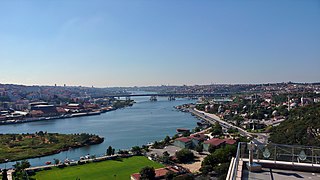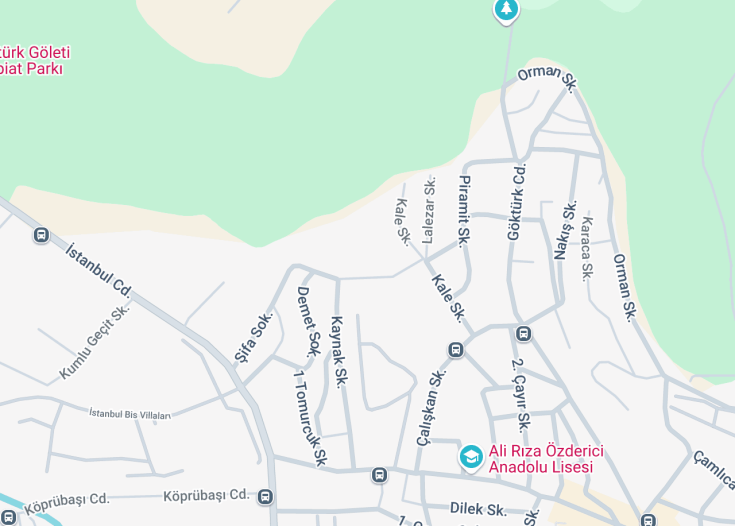Nestled along the Golden Horn, Eyüp is one of Istanbul’s most spiritual and historic districts. Revered for its sacred Eyüp Sultan Mosque and the surrounding cemetery, it attracts both the devout and tourists seeking tranquility and reflection.
Beyond the religious sites, Eyüp also offers charming cafes and stunning views from Pierre Loti Hill, providing a perfect blend of solemnity and scenic beauty. Its streets, lined with Ottoman-era houses and the ancient walls of Istanbul, tell tales of the past, making Eyüp a captivating destination for those looking to delve into the spiritual and historical wealth of Turkey.
For the best experience in Eyüp, visit early in the morning to avoid crowds and fully absorb the spiritual ambiance of the Eyüp Sultan Mosque without rush.
To truly connect with the historical essence of Eyüp, consider a guided walking tour that covers the mosque, Pierre Loti Hill, and the surrounding historical sites.
Top things to do & see in Eyüp
Select the following sights and activities to discover best tickets and tours available in Eyüp.
Eyüp: A Glimpse into Istanbul’s Historic Soul
| Country | Turkey |
| Time in Eyüp | GMT+3 |
| Language spoken | Turkish |
| Population | 382,594 (Turkish Statistical Institute, 2022) |
| Currency | Turkish Lira (₺, TRY) |
| Airports |
|
Eyüp, a district on the European side of Istanbul, Turkey, has a deep religious significance and a rich historical tapestry. Situated just outside the city walls near the Golden Horn, Eyüp is one of Istanbul’s oldest and most significant areas, primarily famous for being a spiritual center since the Byzantine era. The area is named after Abu Ayyub al-Ansari—the standard-bearer and companion of the Prophet Muhammad—who died during the Arab siege of Constantinople in 670 and whose tomb is located here. The district is not only pivotal due to this mosque but also for the Eyüp Sultan Cemetery, where generations of Istanbulites have aspired to be buried.
This neighborhood seamlessly blends the spiritual with the everyday, hosting a weekly market where both tourists and local shoppers crowd the narrow lanes, haggling over items from household supplies to intricate handcrafts. The Pierre Loti Hill offers splendid views of the meandering Golden Horn and is reached by a historic cable car, adding another layer of charm to this culturally rich district.
The neighborhood’s spiritual significance is highlighted each year during religious festivals, particularly during Ramadan when thousands visit Eyüp Sultan Mosque to pray. The area exudes a festive ambiance, with lights decorating the streets and the air filled with the scent of traditional foods. This historical and cultural richness makes Eyüp a must-visit for those endeavoring to understand Istanbul’s profound and multi-layered history.
Where is Eyüp?
Eyüp is located on the Golden Horn, northwest of the historical center of Istanbul in Turkey, providing a peaceful escape from the city’s hustle and bustle.
Distances:
| Route | Distance by car | Time by car |
|---|---|---|
| Istanbul to Eyüp | 5 miles | 20 minutes |
| Ankara to Eyüp | 280 miles | 5 hours |
| Izmir to Eyüp | 330 miles | 6 hours |
What is Eyüp famous for?
Eyüp is renowned for the Eyüp Sultan Mosque, an essential pilgrimage site for Muslims, and its historical cemeteries providing a serene resting place against a backdrop of sacred history.
History
Byzantine Period to the 15th Century
The historical locale of Eyüp, situated at the Golden Horn’s end, traces its origins to the Byzantine era. Originally known as Kosmidion, the area was long revered due to its monastic establishments and the belief that the Shroud of Christ was kept here before its transfer. The notable reverence for the site was enhanced by its significant religious implications and strategic proximity to Constantinople’s walls.
1453 – The Ottoman Conquest
After the Ottoman conquest of Constantinople in 1453, Eyüp gained further prominence due to the burial of Abu Ayyub al-Ansari, the standard-bearer of the Prophet Muhammad, who died during the first Arab siege of Constantinople. Sultan Mehmed II ordered the construction of a mosque at the burial site, subsequently attracting a residential community. This event marked the inevitability of Eyüp as a pivotal religious site in the Ottoman Empire, setting precedents for visiting pilgrimages by sultans succeeding ascension to the throne.
16th – 19th Century
Throughout these centuries, Eyüp continued to evolve as a center of Islamic tradition and architecture. Many religious schools, known as madrasahs, as well as a notable number of fountains, tombs, and hammams, were constructed, reflecting the district’s importance in the religious and daily lives of the Ottomans. The area also became an essential burial place for prominent Ottomans, enhancing its sanctity and cultural heritage.
20th Century to Present
The transition into the 20th century saw Eyüp undergoing important changes due to the collapse of the Ottoman Empire and the rise of the modern Turkish Republic. Though the religious significance remained, the district adapted to the new secular state structure. Today, Eyüp continues to be a significant site for both Turkish Islamic tradition and tourism, accommodating numerous visitors attracted by its historic mosques, peaceful cemeteries, and vibrant cultural aura surrounding the Golden Horn.
Visit Eyüp
What to see and do in Eyüp, Turkey
Eyüp, with its rich historical context and spiritual significance, offers a variety of experiences for travelers. Key attractions include:
- The Eyüp Sultan Mosque, an exquisite example of Ottoman architecture and a major pilgrimage site.
- Pierre Loti Hill, named after the famous French writer, offering stunning views of the Golden Horn with its vibrant café culture.
- The Historical Merkezefendi Cemetery, housing the graves of many prominent historical figures.
- Pathways along the Golden Horn, perfect for leisurely walks by the water’s edge.
Cultural enthusiasts and those interested in the spiritual history of Istanbul will find Eyüp both captivating and enriching.
Annual events in Eyüp
Eyüp is vibrant with cultural and religious events throughout the year. Notably, the Ramadan festivities see the district come alive with special prayers, lights, and community meals, particularly vibrant around the Eyüp Sultan Mosque area, attracting both locals and tourists during this holy month.
Best time to visit Eyüp
The best time to visit Eyüp is during spring (April to June) or fall (September to November). During these months, the weather is pleasantly mild, and the district is less crowded, offering a more relaxed atmosphere for exploring its historical and spiritual sites.
Is Eyüp worth visiting?
Eyüp is undoubtedly worth visiting for anyone interested in the rich tapestry of Istanbul’s history and culture. Its blend of revered religious sites, scenic views from Pierre Loti Hill, and the evocative atmosphere of its historic streets offer a uniquely reflective and peaceful experience.
It provides a poignant reminder of the city’s layered history, making it a significant destination for both spiritually-inclined travelers and those seeking to understand the essence of Istanbul’s past.









